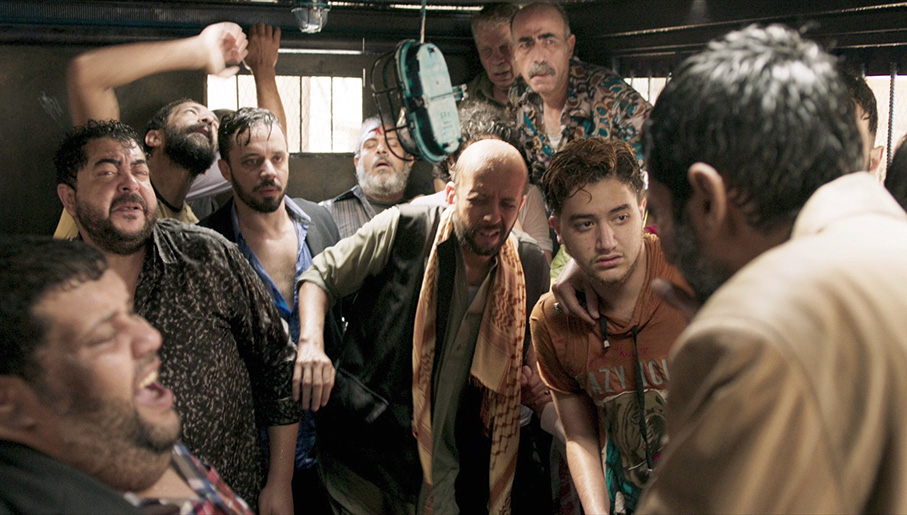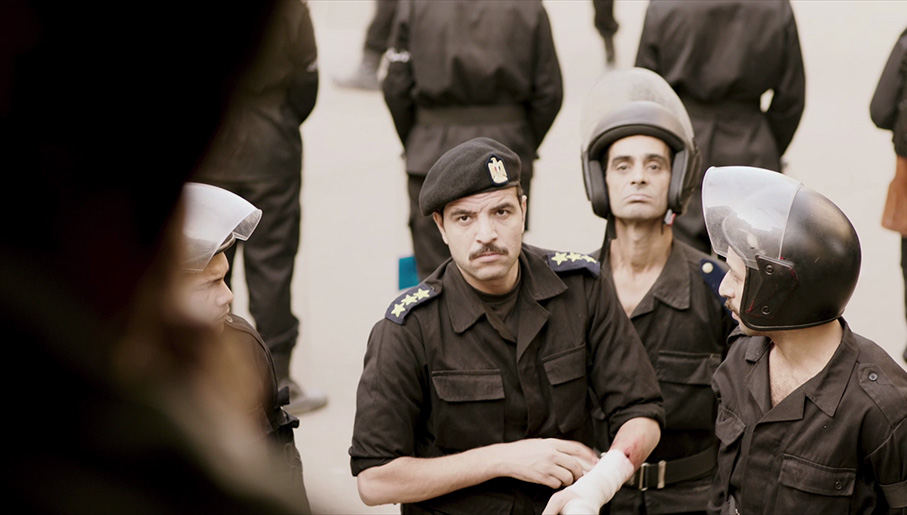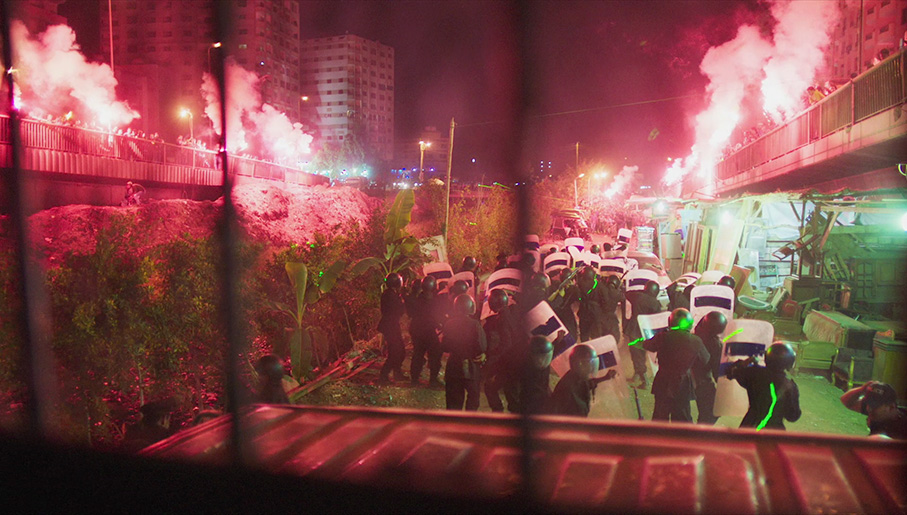|
I've taken part in my share of protests over the years, but – a little sadly – never one that's brought down the government nor – perhaps more happily for my own wellbeing – one that has descended into violent anarchy. Many years ago, I and my fellow agitators did have a run-in with the police at Greenham Common, where the heavy-handed tactics of the boys in blue resulted in a number of unpleasant injuries on our part, but no-one fired bullets or tear gas at us, and none of us was thrown into the back of overcrowded paddy wagons and left in there to stew in the midday sun. Not so the demonstrators who took to the streets of Egypt in 2011 to demand the overthrow of President Honsi Marabak, or those who did likewise in 2012 to protest the election of Mohamed Morsi and his attempts to impose an extreme Islamist constitution, or those on both sides who vented both support and anger at his removal from power by the military in July of 2013. For these protestors the stakes were dangerously high. Leaked reports have since revealed that in 2011 the police killed over 800 protestors in Cairo alone, and in one notorious incident in August 2013, 37 Islamist protestors died when police fired CS gas into the back of a police van in which they were being held.
It is in the midst of the 2013 social turmoil that Egyptian filmmaker Mohamed Diab's Clash is set. Morsi has recently been removed from power and rival factions have taken to the streets to loudly express their feelings both for and against the move, while the military is forcefully attempting to crack down on the protests. The film unfolds over a 12-hour period as a number of individuals are rounded up and thrown into the back of a police van, and it records how they respond to outside events and how they interact and come into conflict with each other and their impatient guardians. The kicker is that the entire film takes place in the interior of that single police van – individuals came and occasionally go, but the camera never ventures outside the rear door of the vehicle. If this approach has a familiar ring, then that's because it was previously used by Israeli director Samuel Moaz for his 2009 film Lebanon, an autobiographical work based on his own experience as a novice tank gunner in the Lebanon war. In that film the camera also never ventures outside the vehicle in which the primary action is set, which restricts our viewpoint to that of the tank crew, with the conflict outside observed as they see and experience it. The effect is fittingly claustrophobic, and becomes as tense as hell when the tank comes under fire and we feel as trapped and vulnerable as the terrified occupants of this potential steel coffin.

By adopting a similar approach with Clash, Diab locks us up in the back of the van with the diverse collection of arrestees and forces us to experience unfolding events exclusively from their viewpoint. There's no build-up here – the film begins inside the then empty van police vehicle and just seconds later we meet its first involuntary occupants, who are not protestors but American-Egyptian reporter Adam Ramzi and his Egyptian photographer Zein. Once inside the van, they attract the attention of a nearby group of pro-military protestors, who begin stoning the vehicle the moment that they learn that the two men are journalists, whom they believe are all spies for the Muslim Brotherhood. The soldiers intervene and respond by arresting several members of the group and tossing them in the van, including a man and his young son, whose incarceration the boy's headstrong mother Nagwa loudly protests. When the officer in charge refuses to release them, she kicks up enough trouble to get herself thrown in the van alongside them.
The protestors' distrust of the journalists creates an instant air of tension that is underscored by the threat of possible violence with no avenue of escape should things actually kick off. As if this wasn't enough, when the van runs into a riot involving Muslim protestors, a number of them are grabbed and bundled into the van as well, confining two rival groups in an enclosed space under circumstances that lead to immediate verbal and physical conflict. This peaks when the homeless Keisha, who was protesting against the Muslim Brotherhood because his beloved dog was killed during the demonstrations, produces a razor blade sliver (which he keeps in his mouth!) and slashes the forehead of one of the Muslims. The resulting pandemonium is only quelled when the soldiers fire a water cannon from point blank range into the back of the van.
It's an incendiary setup which Diab makes the most of, exploring both sides of the conflict through the personal stories that unfold within the vehicle and by observing the manner in which this diverse collection of individuals interact. Initially, the two sides are hostile to each other, and next to no-one has an ounce of sympathy for the journalists. A combination of hostility and religious and cultural differences hamper initial attempts at cooperation, as the Muslim victim of the razor attack rejects the help of practicing nurse Nagwa because his religion forbids him to be touched by a woman. Small divisions set in even within the Muslim group when their elected leader segregates them on the basis of whether they are paid-up members of the Muslim Brotherhood or merely sympathetic to the cause. The first real verbal contact between the two parties takes place between Nagwa's young son and Aisha, a hijab-clothed Muslim girl of similar age, and their conversation captures the seemingly hopeless nature of the division between them in a nutshell. "We play army and MB at school," the boy tells Aisha, who reveals that she does likewise. "When we play, we execute the MB," the boy admits, to which Aisha replies sharply, "When we play, we slaughter the army."

To start outlining how things play out in detail would rob the film of one of its principal strengths, as it's genuinely hard to predict where it will head next at any point. That the inside of the van becomes a metaphor for the current divisions in Egyptian society is clear from the moment the Muslims are thrown on board, but it's a societal split that has its equivalent in any number of cultures worldwide, our own included (had any calm discussions about Brexit with someone of the opposing viewpoint recently?). And while it may seem inevitable that the protestors' shared adversity will eventually soften their self-imposed barriers to unity and cooperation, the circumstances under which this occurs are always believable and rarely predictable. Diab even toys with and then neatly undercuts a couple of clichés on the way, my favourite being the smuggled mobile phone that is dropped and breaks before it can be put to effective use, only to be promptly fixed by a man who repairs them for a living.
The grim reality of what it's like to be locked up in a police van for hours on end is also addressed, as severe heat threatens to dehydrate the occupants and the lack of toilet facilities becomes a serious issue for a diabetic man. This also serves to bring the two sides together when Aisha is similarly desperate, and everyone agrees to turn their backs and give her the privacy she needs but she is ultimately too ashamed to take advantage of this gesture. That the vehicle is a prison on wheels that is vulnerable to external forces is brought home in a number of alarming encounters with everything from projectile-throwing mobs to a sniper whose pot-shots at the police punch potentially lethal holes through the roof of the vehicle. This peaks in a terrifying encounter with a huge and furious army of protestors beneath a highway intersection, where the combination of thrown rocks, exploding fireworks and frantically waved laser pointers creates the dizzying sense that the vehicle has strayed into an active war zone. We're also clued in early on to the fact that this is not the true story of the van in which 37 prisoners died, but when a thrown teargas canister lands dangerously close to the vehicle in which the protestors are being held, there's a very real fear that they will share the same fate.
Given that we're dealing with 28 main characters (25 prisoners, two soldiers and a military officer) whom we meet and have to get to know on the fly, Diab does a commendable job in making so many of them so distinctive through their looks, their clothing and their personality traits. They are also often given little bits of business – sometimes humorous, often revealing – that make them stand out and help to humanise them, from the teen who dreams of being a DJ and worries if his hair still looks good after being hit by the water cannon to the soldier who ends up bundled in the van and is quietly advised by Nagwa to cover a tattoo that would reveal to others his Christian faith. And being trapped in the back of the van with the protestors, we get to know and fear for their safety, and warm to them as the shared seriousness of their situation sees long-held prejudices start to soften. A lesson is being learned, one that has implications for society at large, but has it come too late?

Although the main location is confined and claustrophobic, the background action is sometimes epic in scale, and the sense that we really are caught up in a wave of post-revolutionary societal breakdown is vividly conveyed. In contrast to the more controlled approach taken by Moaz in Lebanon, director of photography Ahmed Gabr here covers the action like a documentarian who has been imprisoned with his camera and is determined to record every detail of what unfolds. In this respect, the camera becomes another character in the film, rushing to the window to observe the mayhem unfolding outside, or peering over the shoulders of protestors through the open rear door as they try to reason with the soldiers for a bottle of water or for the release of the two children. The entire film is shot handheld and often gets up close and personal, but never feels artificially agitated in the manner of action movie waggle-cam.
It seems clear from the opening scene that this is unlikely to come to a tidy or even comfortable conclusion, and there's a discomforting sense that just about anything could happen to anyone during the course of the 12 hours over which the story unfolds. It's a compelling, moving and intermittently nail-biting journey, one that delivers in spades as drama, as socio-political commentary, as a metaphorical examination of the divisions within modern Egyptian society, and as a balanced look at a polarising situation in which all sides are humanised and given their voice. No question of it, Clash is a terrific achievement, and despite its constricted location is as gripping, as through-provoking and as thrillingly cinematic as any film I've seen this year.
One of the first films to be shot on the new Arri Alexa Mini, a small and lightweight version of the popular Arri Alexa 4K digital camera, Clash here receives a pristine transfer on the Blu-ray in this dual format set, with pin-sharp detail, handsomely balanced contrast (albeit with a couple of minor highlight burn-outs when the brightness on one area of the picture is extreme) and a slightly warm but otherwise naturalistic colour palette. The framing is the HD standard of 1.78:1.

The Farsi 5.1 DTS-HD track is clear, clean and inclusively mixed, front-weighted on the dialogue but spreading wider when the action around the truck hots up, with clear frontal separation and largely subtle but occasionally striking use made of the surrounds to place us in the midst of locations and activity.
An English audio descriptive track has also been included and is well executed.
Optional English subtitles kick in by default, but you can also select optional English subs for the deaf and hearing impaired.
Tales from the Van – An Interview with Mohamed Diab (42:58)
Conducted in fluent English and very likely shot specifically for this release, this interview with director Mohamed Diab runs for a good length and is jam-packed with info on the film and its making. Topics covered include the genesis and development of the project, its divided reception in Egypt, the locations and studio-shot pick-ups, the six-month long rehearsal period, creating a range of distinctive characters, working in such a constricted space, how a letter of praise from Tom Hanks helped to secure the film a release with nervous distributors, and a good deal more. Essential viewing, but best saved for after you've seen the main feature.
Making-of (18:29)
A snappily assembled and busy ‘making-of' video that mixes interviews with a number of the actors and filmmakers with behind-the-scenes footage of the shoot and the rehearsals, and illustrative extracts from the film, which was still under production when this was shot. Definitely one for after the film itself, but then it proves fascinating and often revealing viewing.
Trailer (1:33)
A neat trailer peppered with positive critical quotes that captures the tone and content of the film rather well.
A fascinating concept superbly executed, Clash is an ambitious and hugely impressive achievement that is as educational as it is compelling. I'd be recommending this disc just for the film itself, but you also get a terrific HD transfer and two fine extra features, so this is a no brainer. A must-have.
|